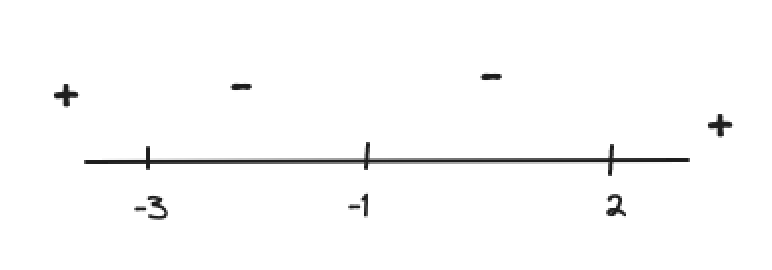- Basic inequalities like can be solved just by common sense.
- But longer polynomial inequalities, especially those involving multiplication, require us to consider the inequality in “cases”.
Case 1: both brackets evaluate to positive.
Case 2: both brackets evaluate to negative.
Considering both cases:
- It’s tedious with just two cases. So instead of solving each case separately, we can use this thing called wavy curve method and a couple of shortcuts to avoid solving each case.
Steps:
- Factorize the inequality.
- Identify the critical points–points around which the sign of the expression changes.
- Plotting these critical points on a number line will divide the line into regions.
Now, normally we would consider each of these “regions” as a case and check if the numbers in the interval satisfy our inequality. But, instead of solving these cases, we can convert the expression into a familiar format such that we can find the sign of the interval without actually solving the expression.
Find the sign of our inequality in each of these regions.- Ensure that, in each of the factors, , our is always positive.
- Now starting from the right-most interval, we can start annotating our intervals with their signs.
- The right-most interval is always positive.
- When we cross over into the next interval, our sign may flip.
- Sign flips if the critical point’s bracket’s power is odd.
- Eg: . Here critical point 5 has an even power, so when we cross it, the sign will not flip. But while crossing -1, our sign will flip.
 Here has been multiplied with 0 (hence ignored) as the term will always be positive.
Here has been multiplied with 0 (hence ignored) as the term will always be positive.